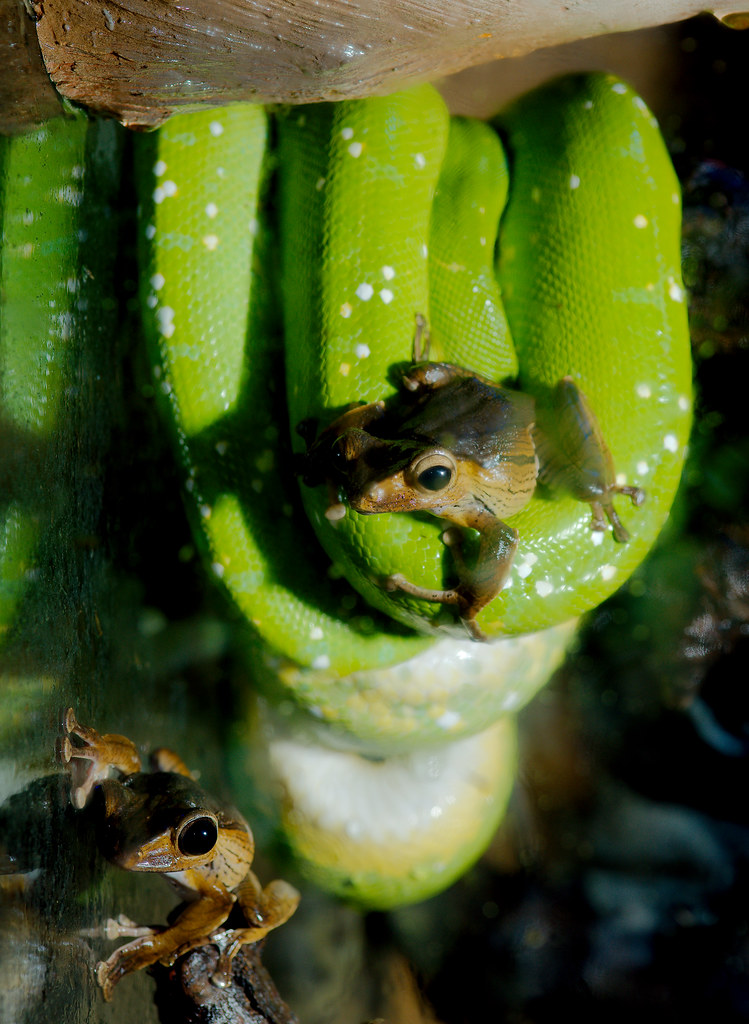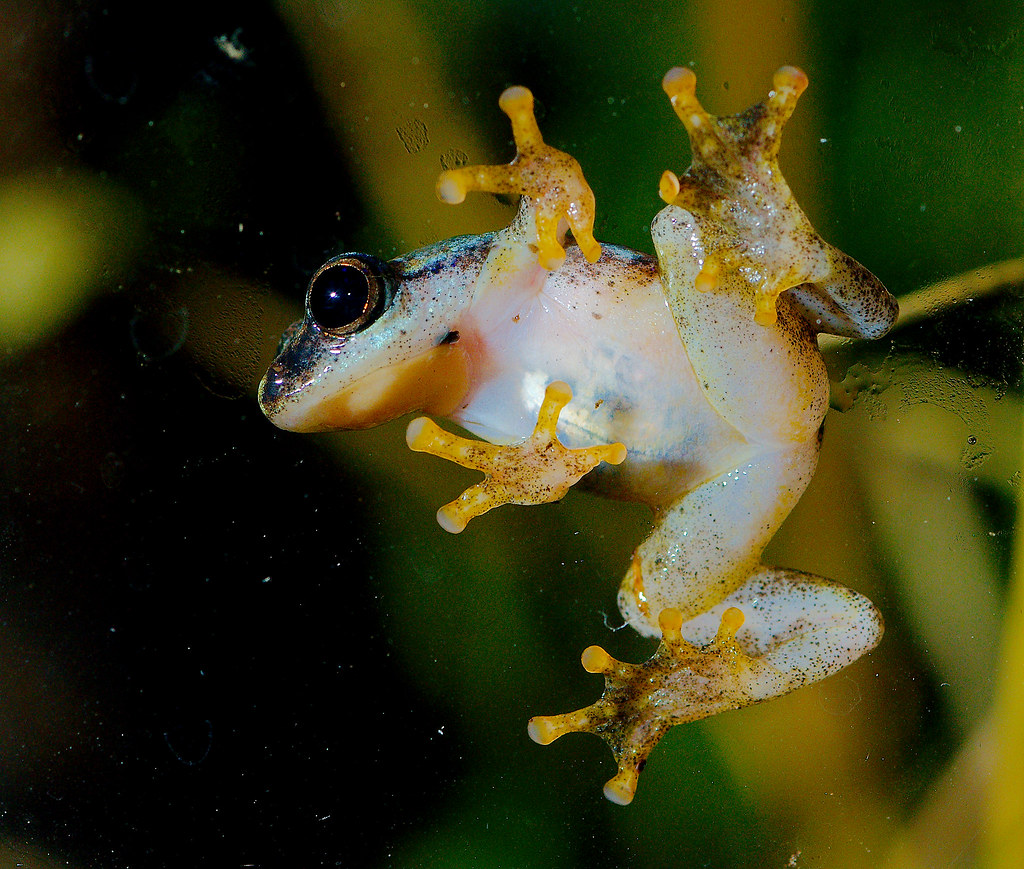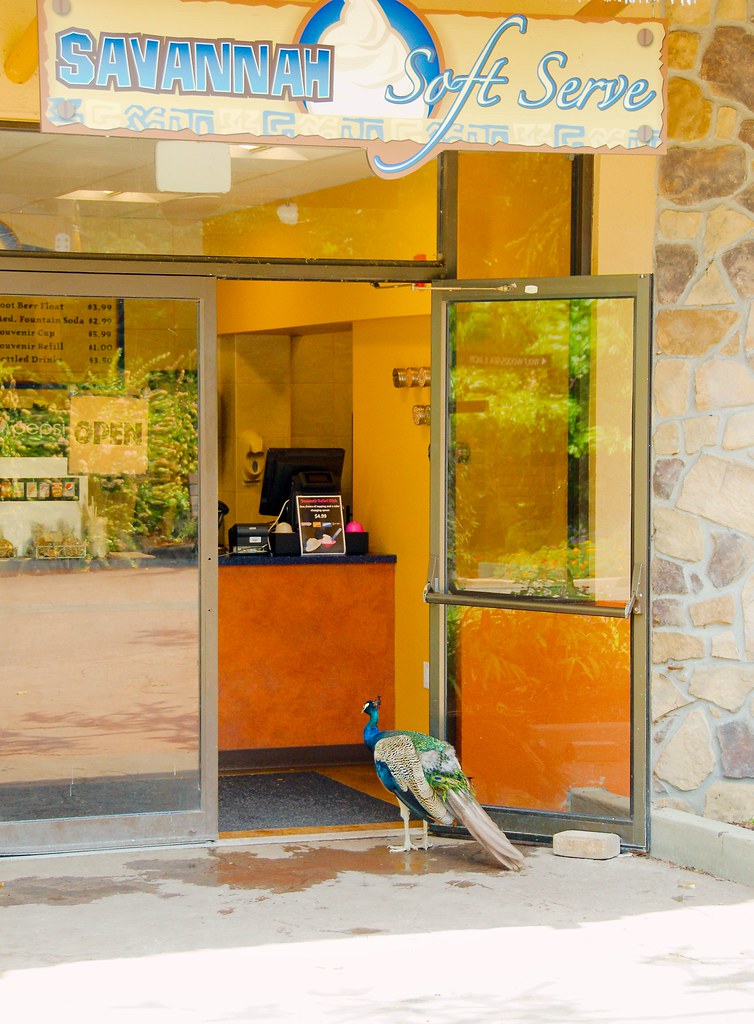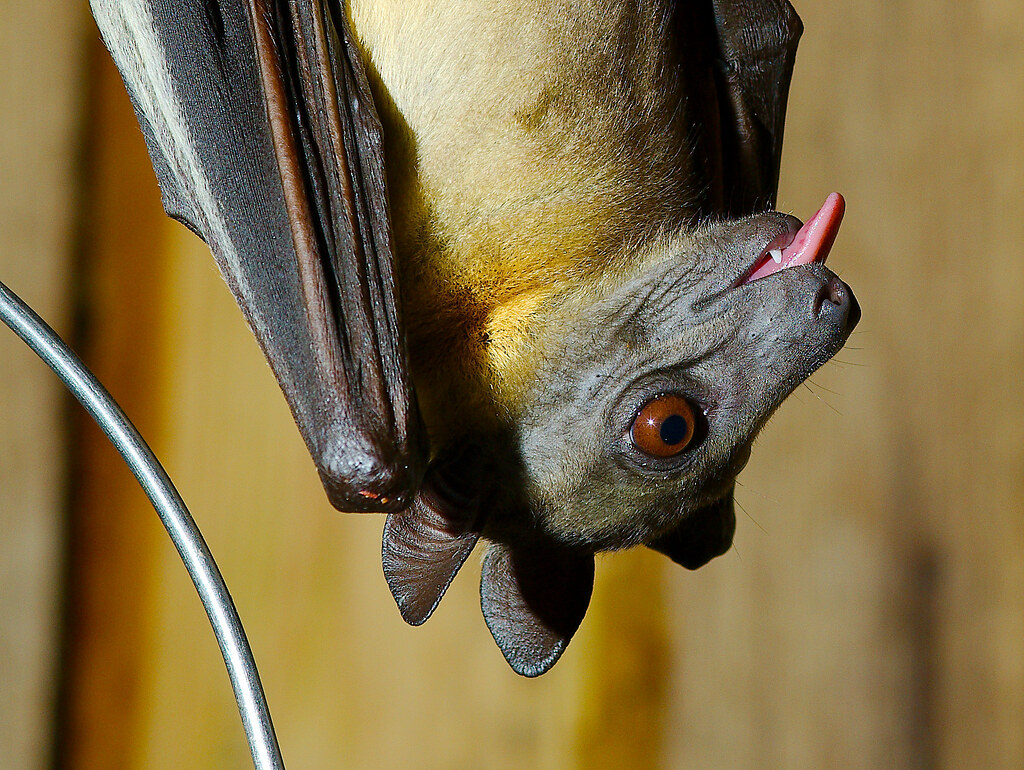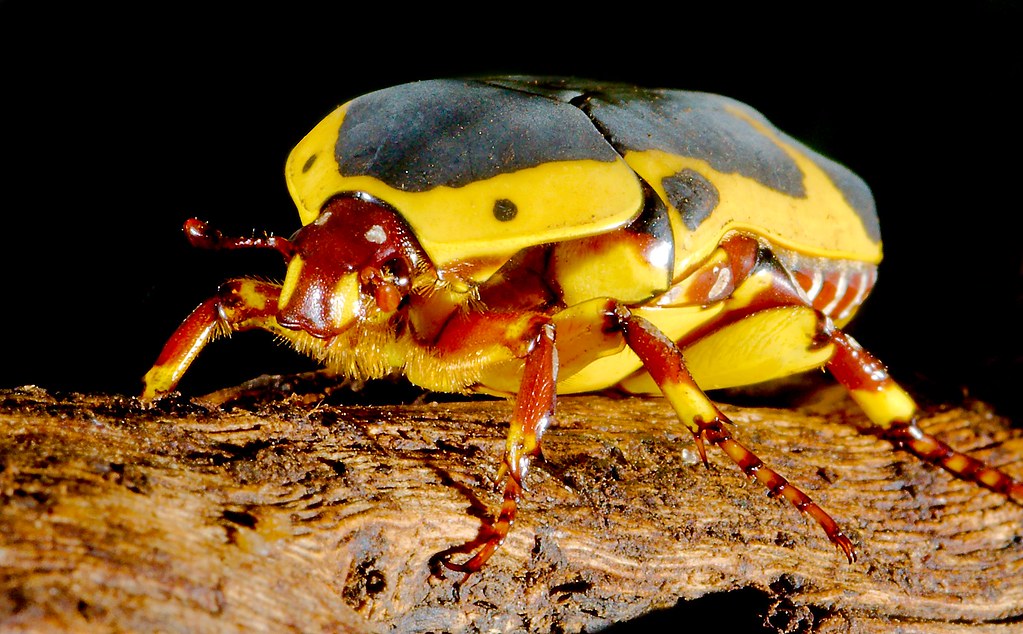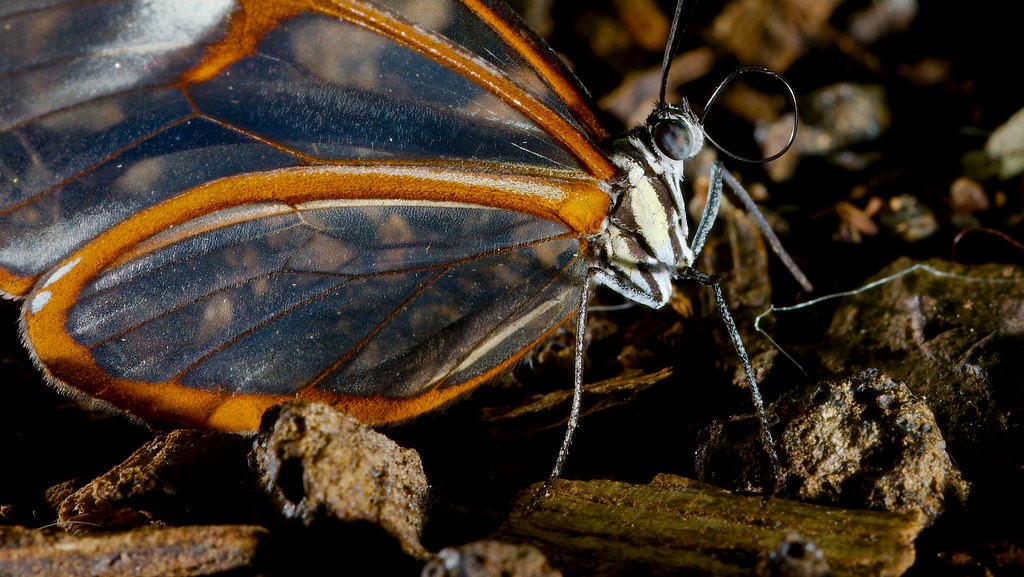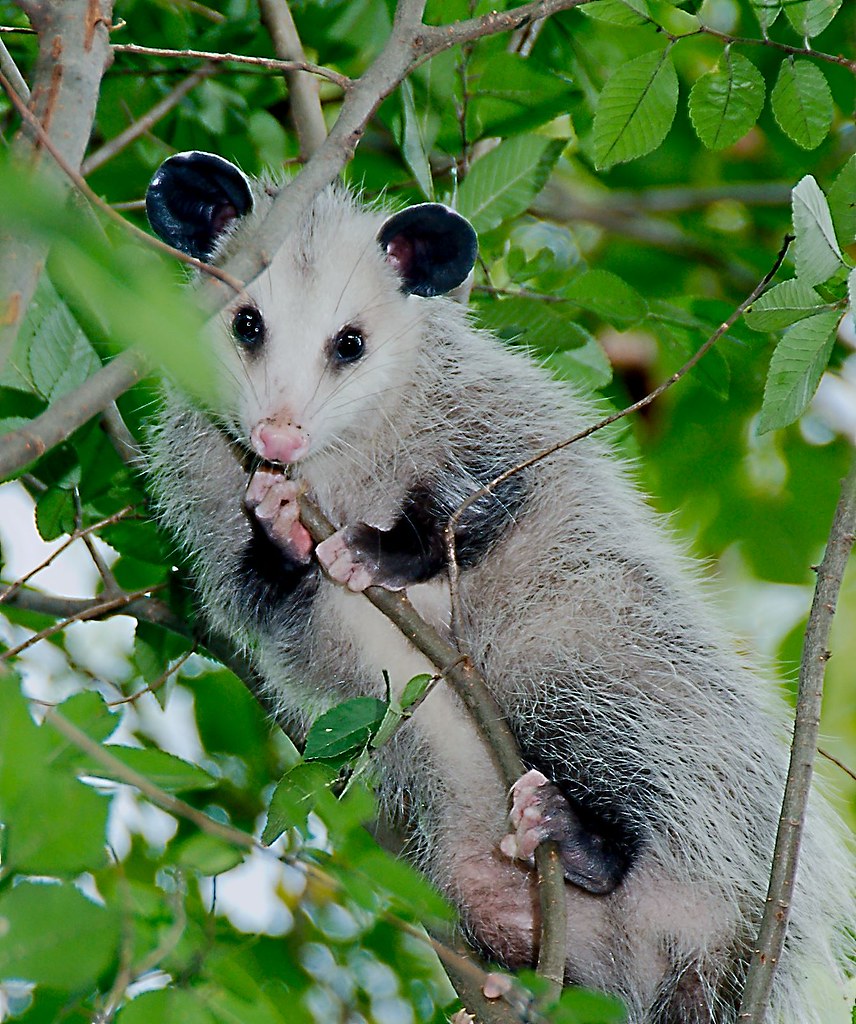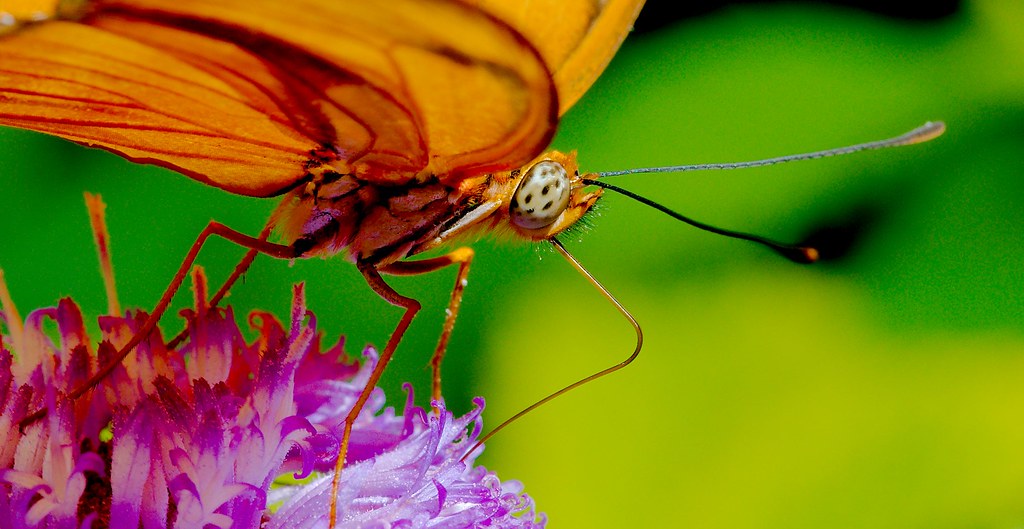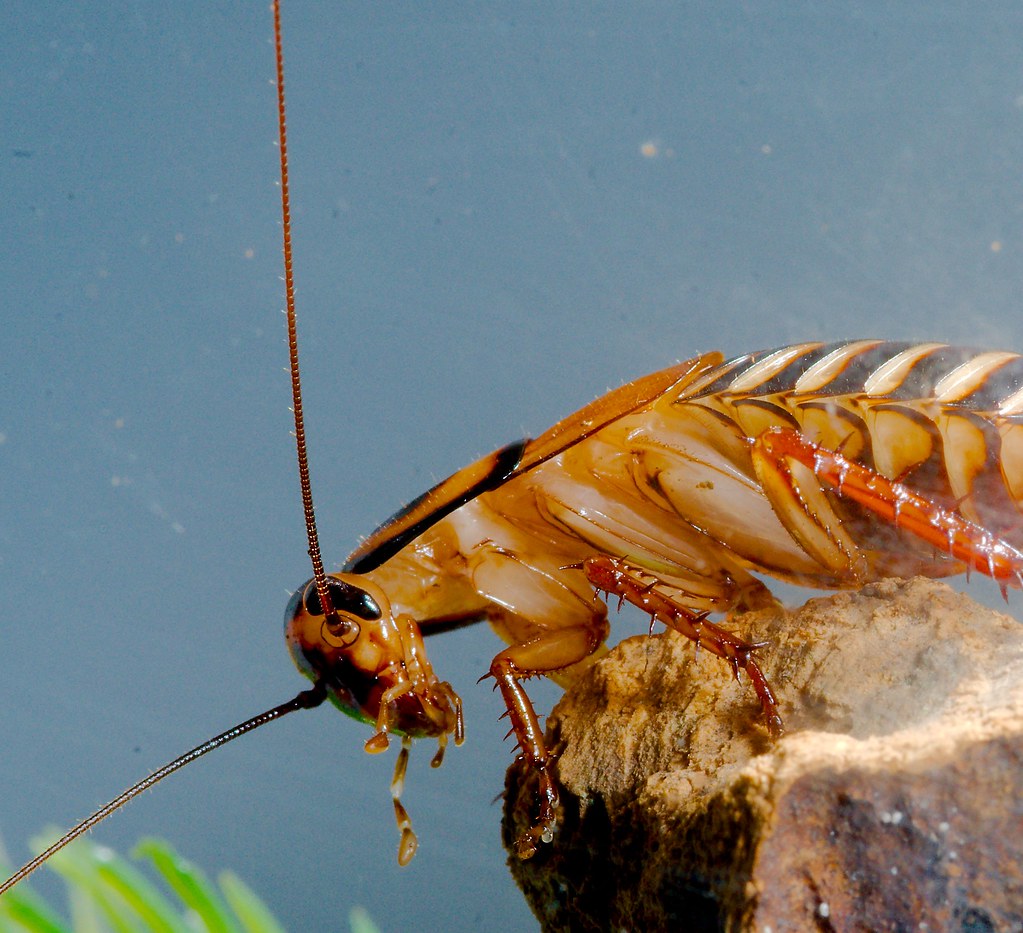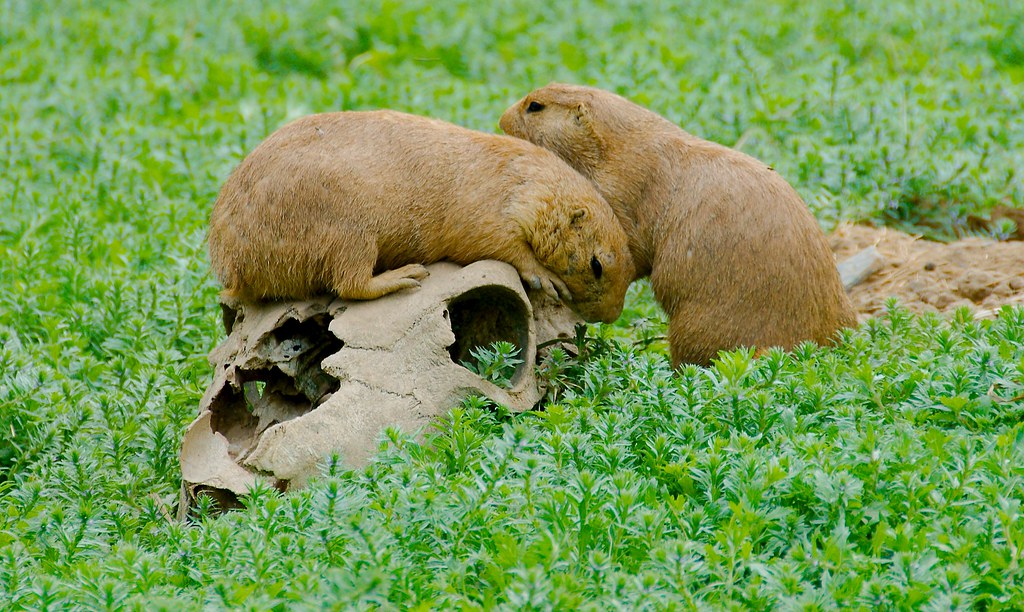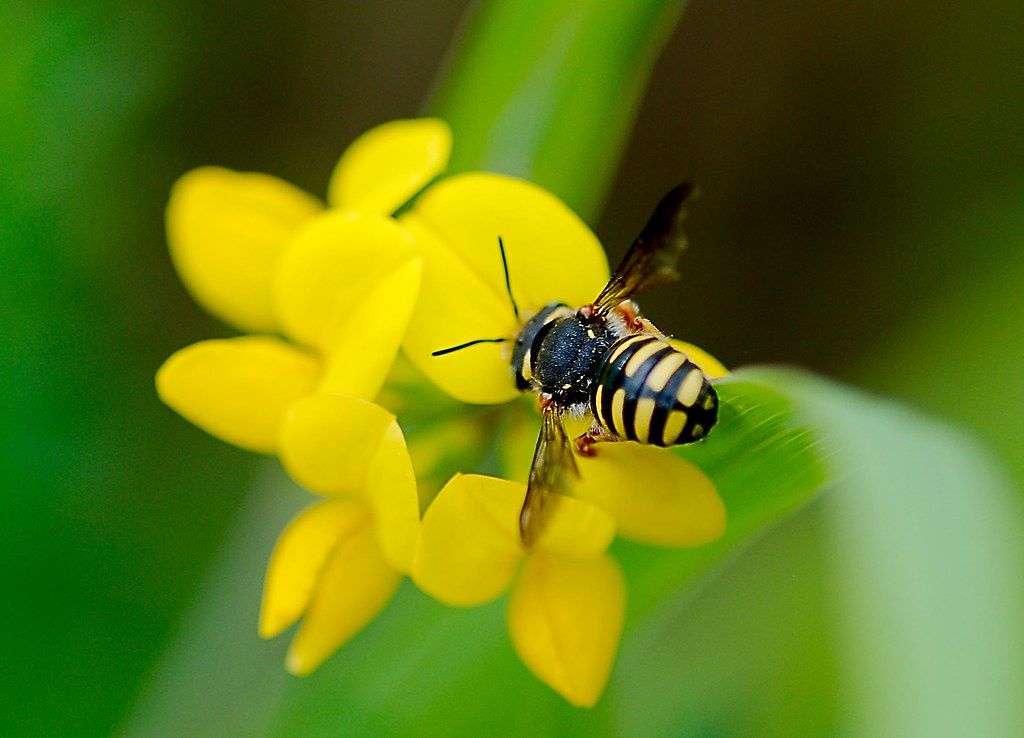
In nature, yellow and black stripes mean “Warning! Dangerous!”. In the human world, it means “Welcome to Schiedam, Holland”.
All posts by Josh More
Green Tree Python (Morelia viridis) and Borneo Eared Frog (Polypedates otilophus)
Potto (Perodictus potto)
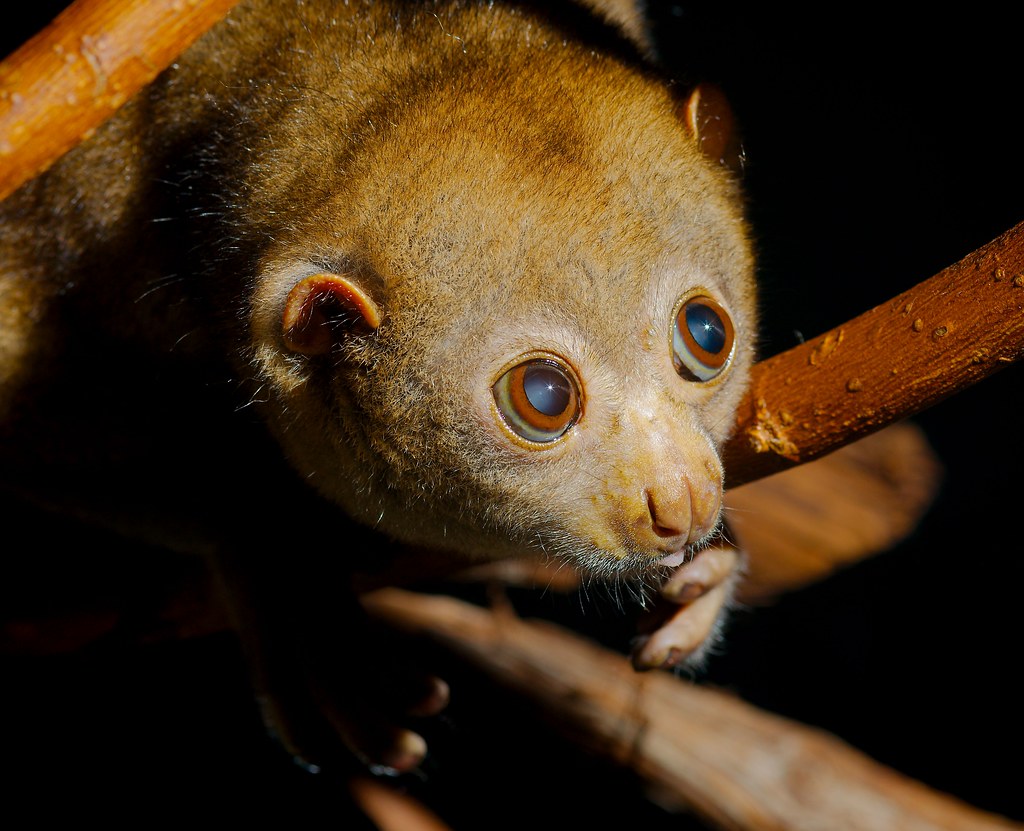
Taking photos of nocturnal animals is tricky. First of all, it’s hard to focus in the dark. Second, if they’re adapted to the dark, it’s somewhat cruel to hit them with a flurry of bright flashes. Now, a lot of zoo animals are used to that, because the average zoo attendee isn’t going to have the first clue how to manage their flash power. Still, I think it’s best to minimize impact where you can.
To get this shot (and shots like it), you need an animal that doesn’t move quickly. Slow movers, like this potto, are best, but even moderate movers work well. Then you set the camera to as wide an aperture as you can get away with. I wanted the eye, ear and nose in focus, so I chose 6.7. I could have gone to 8, which is more common for this sort of work, but I’d have to boost the flash a lot and I wasn’t comfortable with that.
Then, I set the camera on the tripod and do a basic focus. This will not be ideal, but it’ll be close enough for the next step. Then, you can figure out where you want the light to come from. I wanted it up and to the right, as that is a pretty classic position and won’t look weird (weird photos will come later). Then set the flash to its lowest power and take a shot. This will tell you how much brighter you need *OR* how much to boost the ISO. If you increase the ISO setting on the camera, you’ll get more noise but you need less light. On mine, any shot between 100 and 400 ISO looks about the same, so that’s the range I work in here. Once ISO is as high as you’re comfortable, you boost the flash power until the photo is balanced enough. On modern cameras, you can under-expose a bit and fix that in post. This gets you the bare minimum light level you need, maximizing kindness to the animal while still getting the shot.
(Some may argue that it’s unkind to take a photo at all. I can understand that point, but really, without photos, people don’t know what they’re protecting, so I think it’s a net gain.)
Now you need to handle focus. Set a pocket flashlight and set it to as wide a beam as possible. That way, you can get just the edge of the beam on the animal. This slight increase in light can be set so it never touches the animal’s eyes but provides enough for autofocus to lock on. Then you can lock focus, move the light away quickly and take the photo with flash. The slower the animal is, the more likely it is to remain in focus during this time. Using a remote cord release in the hand holding the flash unit can help maximize your success … and make you look really weird to the other zoo people.
One word of caution. Most zookeepers are very understanding when you explain what you’re doing and why, but I am very careful never to use the flashlight trick when kids are around. They’re unlikely to understand the care involved and no one wants them to think that shining flashlights into the exhibits is a good idea.
And now you know.
Powder Blue Reed Frog (Heterixalus madagascariensis)
Jaguar (Panthera onca)
Too Hot
Straw-coloured Fruit Bat
Throwback Thursday
Yellow Bellied Beetle (Pachnoda flaviventris)
Cactus Mouse (Peromyscus eremicus)
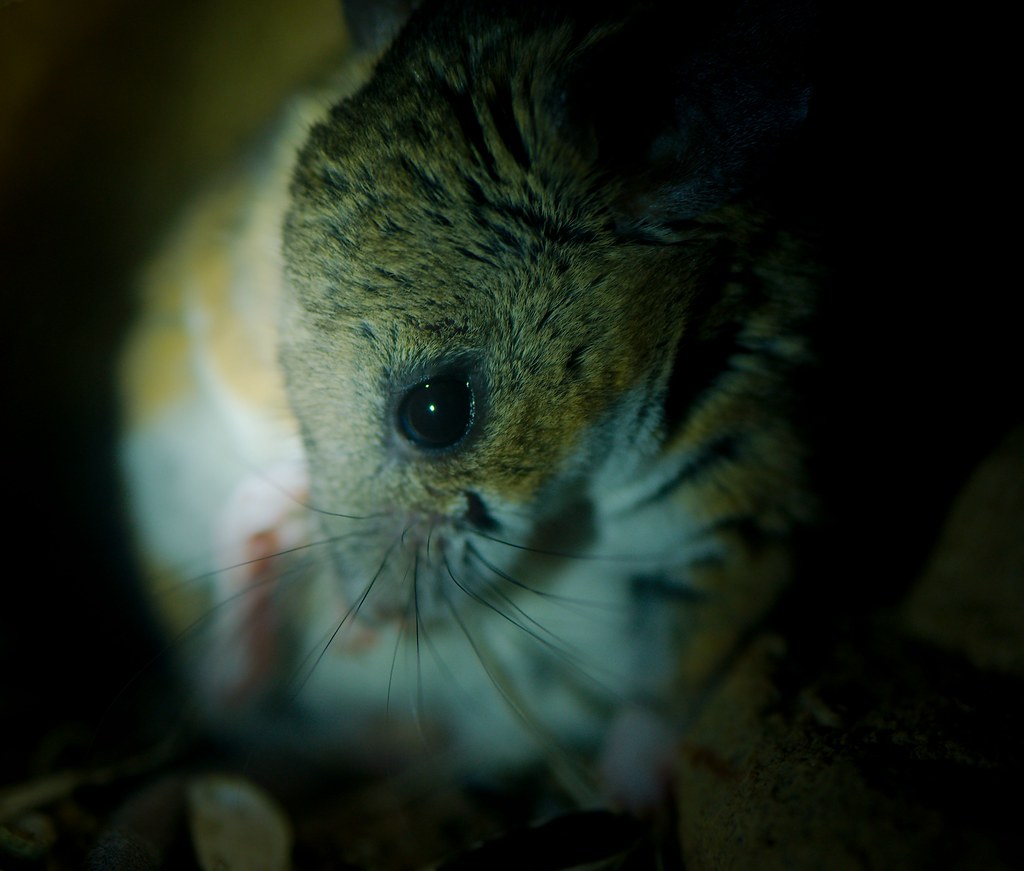
This is not a great photo, for which I apologize. It is, however, illustrative of a common difficulty I face when doing my photos. This mouse is nocturnal. While fairly abundant (most rodents are doing OK), unless you like to go out in the desert and either trap them or destroy cactus to get to them, you’ll never see one. I did see some desert rats, but they move much too fast in very low light to get a photo. So this is the best you can get.
Nocturnal exhibits are tricky. I generally try to avoid flash except at the very lowest power (and for highly sensitive animals, no flash at all). However, it’s often too dark to even focus. So, to get a shot, you have two choices. You can either go for a narrow aperture to maximize your depth of field (how much of the animal is in focus) and really blast it with light, or you can open the lens up, which makes the focus plane very narrow and go with little light. Blasting an animal with light is potentially cruel to the animal (depending on how their eyes or eye-like features are constructed), can stun it into non-normal behavior (making the photo less interesting) and, in zoos, cause a lot of glass bounce. If you take the other approach, focus can be hard, as you’re not working with much light either to begin or end.
In this case, I used a flashlight technique. I used a flashlight on low power, in a glancing orientation so it didn’t hit the mouse’s eyes, to set the focus on the camera (on a tripod). Then, I set the camera to take several photos in rapid succession, and just swept the flashlight beam across the mouse fairly quickly. Then, it’s just a matter of choosing the best image.
It may not be the world’s best photo of a mouse, or even of a cactus mouse. I don’t think it stands on its own (hence this long-winded explanation). However, I think it captures the intimacy of the burrow without hurting the mouse, which was the core goal.
Glasswing
Another view of the glasswing from yesterday. Notice all the little hairs (probably not the right name) on the wings. You can see them on other butterflies if you look. On these though, since there are no scales, it’s a lot easier to see how the wing is constructed.
You can also see how, since they live much more placid lives than the other butterflies, they must play sports to keep things interesting and to demonstrate their fitness to mate. This one is playing the role of the hoop for Ōllamaliztli.
Water Strider (Gerris marginatus)

Waterstriders are gentle but highly protective. There are large, a whopping 12.7 millimeters long and are designed to float across the top of the water due to their long legs.
When waterstriders enter battle, they have an appendage-like stinger that comes out of their mouth. This stinger is well adapted to combat their mortal enemies, The Garthim. Once stung, they use their long legs to push The Garthim over so they sink beneath the waves and drown.
They are used as mounts throughout the world of Thra.
Glasswing Butterfly
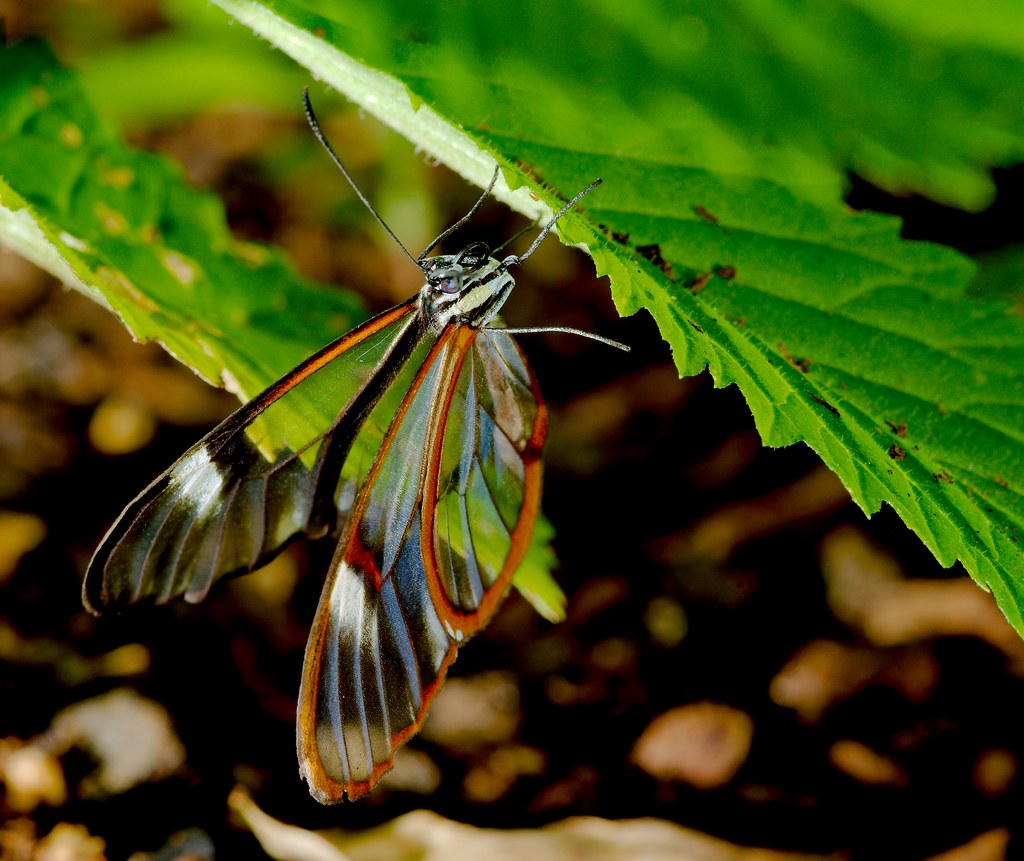
There are animals that you read about, but never really expect to see. Some of them are rare. Some are extinct. Some are just mythical. Others though, are just really really hard to see.
This is a glasswing butterfly. They were on my list of things to see when I went to central America. While I was able to see several blue morphos (another classic butterfly of the area), I was constantly foiled in my attempts to see the glasswing. Since then, every butterfly garden I visited, I’d ask if they had glasswings. The National Zoo claimed to have them, but I never found them.
Then, in Phoenix, I visited the Butterfly Wonderland. I had called first and asked if they had glasswings. Upon receiving an affirmative, I set aside an afternoon and went a-photographing. Upon getting there, I saw many different butterflies and moths (why isn’t it “mothes”, by the way). What I did not see, however, was the glasswing.
The issue, of course, was that I knew they existed and I knew one was around, but having never seen one, I didn’t know what to look for. I knew that they were butterflies who lacked scales on their wings and, therefore, had clear wings like most insects do. What I didn’t know was how hard it would be to find an animal the size of a dime in a 10,000 square foot (929 square meters for those of you who use a real measuring system). Moreover, I didn’t know hard it would be if the animal were effectively invisible.
This, really, is the difference between intellectual learning and experience. My intellect told me: “You know they’re here, you sorta know what they look like. Just be patient and you’ll see one eventually.”.
Now that I’ve done it, experience would say:
“These butterflies are small. Really smaller. Much smaller than any of the other butterflies you see. They’re also clear. This means that, unlike the other butterflies who have traded survival opportunities for increased chances of mating, these ones have nothing to gain by being out in the open and if they’re too high up, they run the risk of being blown away. So look for them low to the ground, under other plants. Scan the area with your eyes and remember where the bright, obvious butterflies are. Then look for movement with your peripheral vision. They don’t move much, so be patient and look around each area for at least five minutes before moving on.”
The first time I looked for them when I knew they were there, I spent three hours. Once I lost it and had to re-find it, I had learned enough that it only took me ten minutes.
That is why experience matters.
Butterfly
Virginia Opossum (Didelphis virginiana)
It was senior day at the zoo, by which I mean, the seniors from the local high school were forced to go to the zoo for their Biology class. As I was taking this photo, three young men walked up. Two of them were white, one was African American. They were all dressed in what suburban people call “urban”, but what I am led to believe that urban people call “clothes”. Their pants were loose, they had over-sized sneakers, and everything was fairly worn. They didn’t seem to want to be there.
One of them saw this critter in the tree and looked at the sign. He pointed, and said to his friends “That ain’t a red panda.” Another said “No, it ain’t.” Then the African American guy looked at it and at his friends and said “I believe that is an opossum.”
Then, as his friends stared at him, he said. “Well excuse me for speaking English!” Then they laughed and walked away together.
And that is why you shouldn’t pre-judge people.
Saharan Horned Viper (Cerastes cerastes)
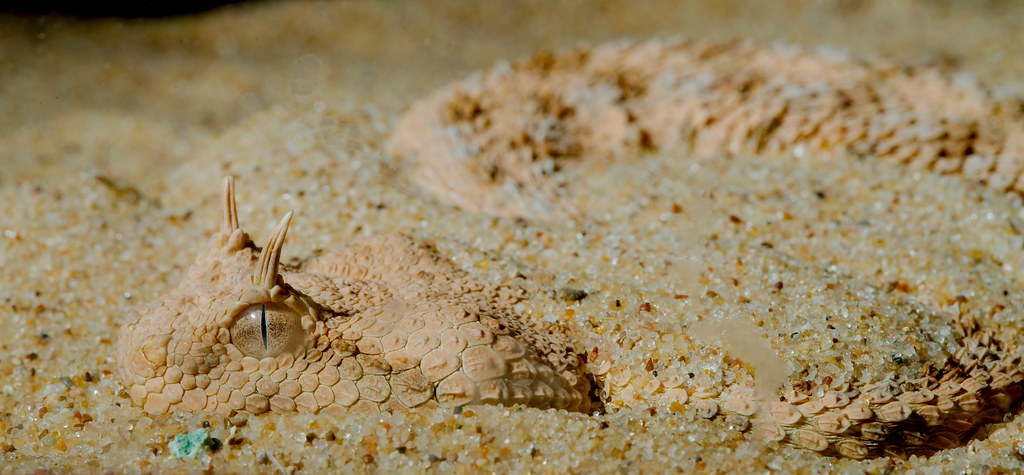
Wikipedia states “In the wild they are typically ambush predators, lying submerged in sand adjacent to rocks or under vegetation. When approached, they strike very rapidly, holding on to the captured prey (small birds and rodents) until the venom takes effect.” I’m going to go out on a limb and say that it’s probably a fairly effective strategy.
Butterfly Tongue
Zebra Bug (Eurycotis dicipiens)
Prairie Dog performing Hamlet
Aardwolf (Proteles cristatus)
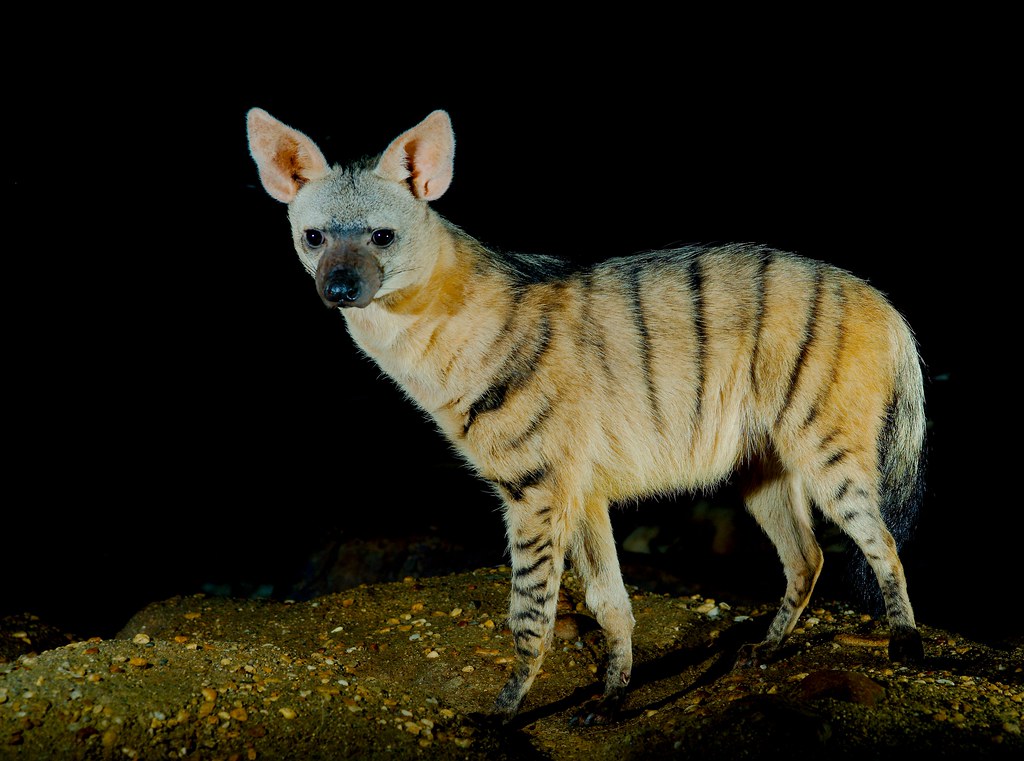
It’s time for another game of … Really? Are you sure?
To play this game, take a close look at this photo. Look at the large ears, well suited to listening. Look at the thin legs and paws, that could be used to make rapid turns while running quickly. Look at the stripes, often seen in stalk-and-ambush predators.
Give yourself at least 30 seconds to look at the photo.
Now ask yourself … “What does the aardwolf eat?”
Now Google it.
Thank you for playing this installment of Really? Are you sure?
Hope to see you next time.
